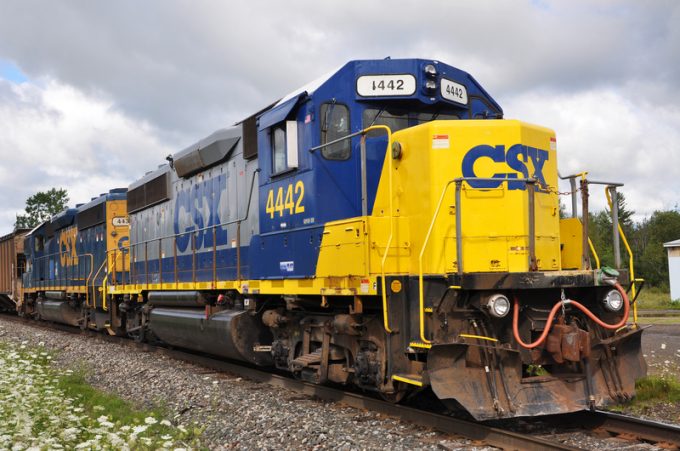Bolloré bounce boosts CMA CGM Q2 revenues, but job worries persist
CMA CGM Group has announced a “robust performance” in the second quarter, with revenues up ...
TFII: SOLID AS USUALMAERSK: WEAKENINGF: FALLING OFF A CLIFFAAPL: 'BOTTLENECK IN MAINLAND CHINA'AAPL: CHINA TRENDSDHL: GROWTH CAPEXR: ANOTHER SOLID DELIVERYMFT: HERE COMES THE FALLDSV: LOOK AT SCHENKER PERFORMANCEUPS: A WAVE OF DOWNGRADES DSV: BARGAIN BINKNX: EARNINGS OUTODFL: RISING AND FALLING AND THEN RISING
TFII: SOLID AS USUALMAERSK: WEAKENINGF: FALLING OFF A CLIFFAAPL: 'BOTTLENECK IN MAINLAND CHINA'AAPL: CHINA TRENDSDHL: GROWTH CAPEXR: ANOTHER SOLID DELIVERYMFT: HERE COMES THE FALLDSV: LOOK AT SCHENKER PERFORMANCEUPS: A WAVE OF DOWNGRADES DSV: BARGAIN BINKNX: EARNINGS OUTODFL: RISING AND FALLING AND THEN RISING

US railroad CSX has reported growth in intermodal activities a year after the dismal fourth quarter that followed turnaround king and CEO Hunter Harrison’s unexpected death.
But these gains will likely be soured by plummeting profits, despite upturns in revenues.
Volumes for the container business climbed 2% for both the final quarter and the full-year 2018, with divisional revenues up 4% (to $492m) and 7% (to $1.9bn), respectively.
Despite the seemingly weak growth figures, chief executive James Foote was surprisingly upbeat and optimistic for the year ahead.
“We are entering 2019 on a new trajectory, with significant opportunity to improve across all aspects of our business,” he said. “I expect CSX to deliver even better service to our customers and drive significant shareholder value.”
After Mr Harrison joined CSX in 2017, the carrier implemented his “precision scheduled railroading” concept, and his loss has not hindered this project, said Mr Foote.
He has “pushed full-steam-ahead” with the plan, which initially saw CSX drop some 7% of its business – seen as a necessary for long-term growth.
Mr Foote described intermodal as the “growth engine” of the railroad industry and stressed that CSX was focused on re-engineering this division to capitalise on its potential.
“We came out of the year 2% up, so this plus 7% means recurring about 9%, which I would say, under the circumstances, is pretty good.”
He pointed to “muted” intermodal growth in a market he said had been impacted by rationalisation.
Executive vice president of sales and marketing Mark Wallace urged investors to bear with the company, stressing that it was a necessary measure.
“When we began this journey to get away from a broken hub-and-spoke model, the impact to those changes was about 7% of our intermodal business” said Mr Wallace. “Despite that, we grew our intermodal volumes last year 2%, and in the middle of 2018 we decided to do another round of rationalisation.
“These changes took 3% of the business, alongside other changes that took effect this year, on 3 January, impacting roughly another 5%.”
Mr Wallace said the lost business had been “bad business”, describing it as “crazy stuff” that had been driving down profitability. He added that while there was still some way to go, intermodal operations were “improving substantially”.
“Some of our customers actually agree with what we are trying to achieve, and clearly we are competing in the lanes where we think we can do a better job of serving them,” he said. “We had a great peak season into Christmas and we are doing so at lower cost.”
Looking forward, Mr Foote believes the carrier will return to “normalised” intermodal growth in 2020, while this year’s goal remains to “best in service”.
Comment on this article